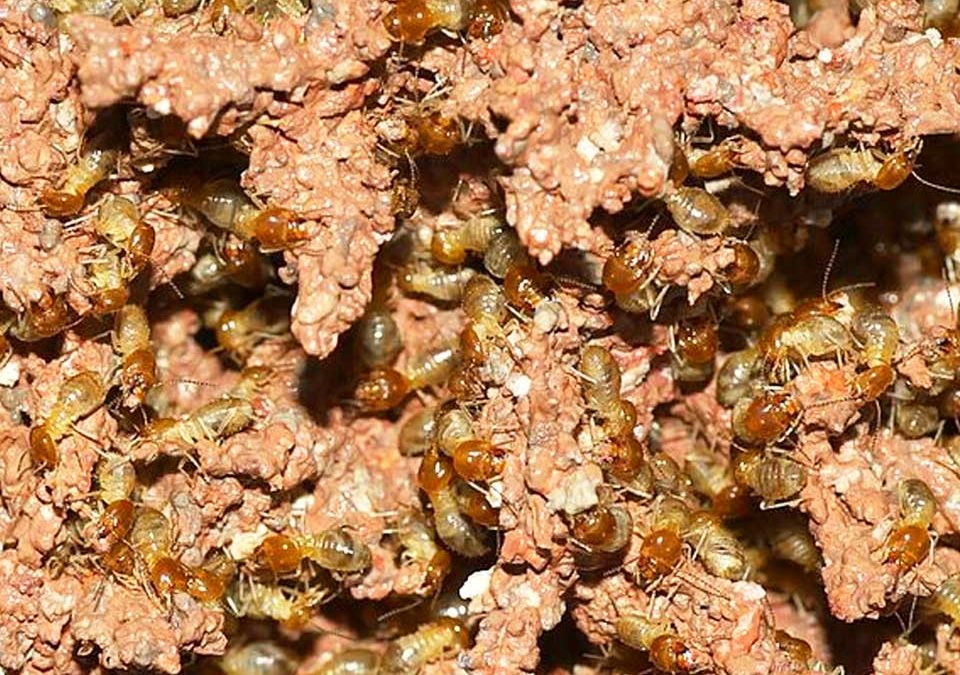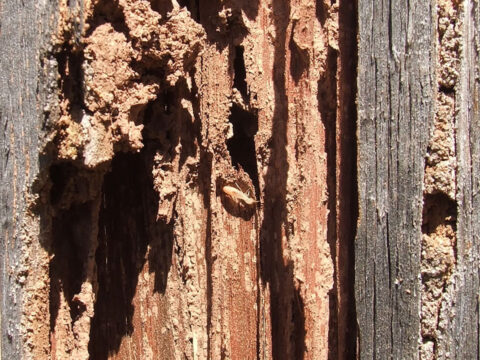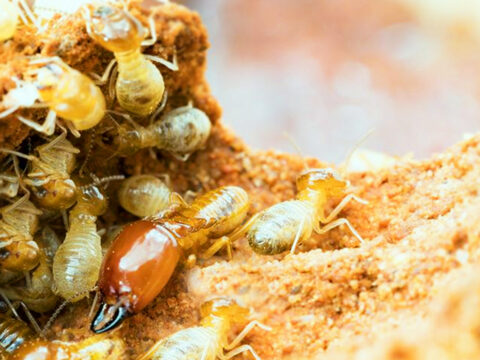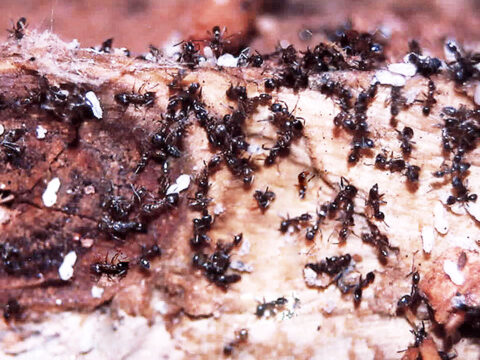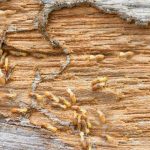
How To Find Drywood Termite Nests In Your Home
August 21, 2023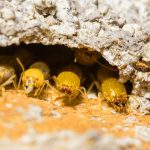
Can Termites Cause Mold In The House?
October 18, 2023Termites are tiny, silent invaders that can cause extensive damage to your home. Homeowners need to be vigilant and proactive in protecting their assets from termite infestations.
One crucial aspect of termite management is understanding their activity patterns. Therefore, today we will focus on what time of day (or night) termites are most active, and how various factors can influence their behavior. Read on if you’d like to learn more!
Why Is It Important To Know When Termites Are Most Active?
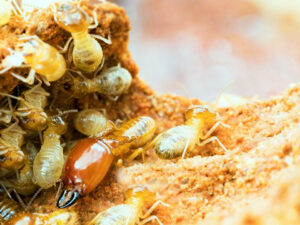 Before we talk about the specifics of termite activity, you must understand why knowing their activity patterns is important. Termites are known for their secretive nature, often remaining hidden within the walls and other structures of your house, often without any visible signs until it’s too late.
Before we talk about the specifics of termite activity, you must understand why knowing their activity patterns is important. Termites are known for their secretive nature, often remaining hidden within the walls and other structures of your house, often without any visible signs until it’s too late.
By knowing when they are most active, you can detect an infestation early. Identifying termite activity early can prevent extensive damage, and if you know when they are active, you can be more vigilant during these times.
Also, knowing when termites are active helps pest control technicians develop effective treatment plans tailored to their species, and activity patterns.
Timely intervention can prevent these insects from causing further damage to your property, potentially saving you thousands of dollars in repair costs.
When Are Termites Most Active?
Termites are most active during certain times of the day and under specific conditions. You can take proactive steps to effectively protect your home if you understand these patterns:
1. Temperature Influence
Termites are ectothermic insects, which means their body temperature depends on the temperature of the surrounding environment.
In the warmer months of the year, they tend to be most active in the morning and evening hours when air temperatures are cooler.
They’re most active when temperatures are moderately high, usually between 70°F and 90°F. Outside this range, during periods of colder weather or extreme heat in the daytime, termites may reduce their activity levels. They will not be active at night if the temperature outdoors drops below 60°F.
2. Humidity Impact
Termites require moisture to survive, as they are highly susceptible to desiccation (drying out). They are most active in warm, humid environments, with humidity levels around 75% to 95% as this allows them to maintain their moisture levels. Changes in humidity levels will affect termite behavior and activity patterns. During periods when humidity levels in the soil and air drop too low, termites become less active. From spring to fall, they tend to be most active during the morning and evening hours when humidity levels are higher.
3. Light Exposure
In general, termites prefer dark, sheltered environments and prefer the darkness of night to direct sunlight during the day. They avoid and are sensitive to sunlight as it can dry out their bodies and make them much more vulnerable to predators. For this reason, termites are often found hidden within the structures of your home, where they can remain protected from the elements.
4. Species Variation
However, different termite species may have varying activity patterns. We will describe this in more detail below.
Do Termites Come Out At Night Or During The Day?
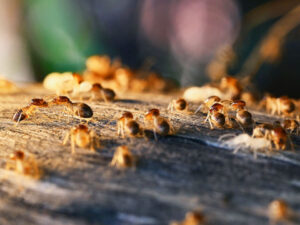
Termites do come out at night, but this behavior is not universal for all species. While most termite species are predominantly nocturnal, others, such as drywood termites, can be active both during the day and night. Drywood termites live within the wood they infest, which means they are less exposed to environmental factors and predators. This allows them to be more flexible in their activity patterns. But still, they tend to avoid direct sunlight and prefer dark, sheltered areas.
Swarming Formosan termites are mostly out at night during the late spring and summer months.
Subterranean termites, which are among the most common types of termites, tend to swarm and be more active at night or in the early morning. They forage for food during the dark hours. Their preference for nighttime activity is driven mainly by their sensitivity to light and the need to remain hidden from predators.
When Do Termites Sleep?
Termites don’t experience sleep in the same way humans do, i.e. awake during the daylight hours and asleep at night. Instead, they are designed to have a continuous, round-the-clock activity cycle, where individual termites take turns in performing various tasks within the colony. These tasks involve foraging, feeding, grooming, and caring for the young and the queen.
Since termites may not have a defined “sleep” period, their activity levels can fluctuate based on environmental conditions and colony needs. Factors such as humidity, food, and heat increase the likelihood of termites coming out at night.
When Do Termites Feed?
As mentioned above, termites can feed throughout the day and night. Their feeding activity is closely linked to their foraging patterns.
Subterranean termites, for instance, usually forage for food during the night. On the other hand, drywood termites live within the wood they consume and can feed at any time of the day. It needs to be stressed though that termites do not forage for food when the soil is too hot or cold.
Their continuous feeding habits contribute to the gradual destruction of wooden structures within your home.
Overall, it may be said that several factors, such as seasonal changes and weather conditions, can influence termite activity patterns. As termites can cause major damage to your home, it’s important to understand their behavior and activity patterns when assessing the risk of infestation and planning pest control measures.
Early detection and proactive prevention are key. So if you suspect any termite activity in your home, whether it’s the presence of swarmers, mud tubes, or damaged wood, contact Chem Free Exterminating as soon as possible. Our local termite control experts in Orange County, California, can assess the extent of the infestation, suggest appropriate treatment options, and help safeguard your home from these destructive pests.

